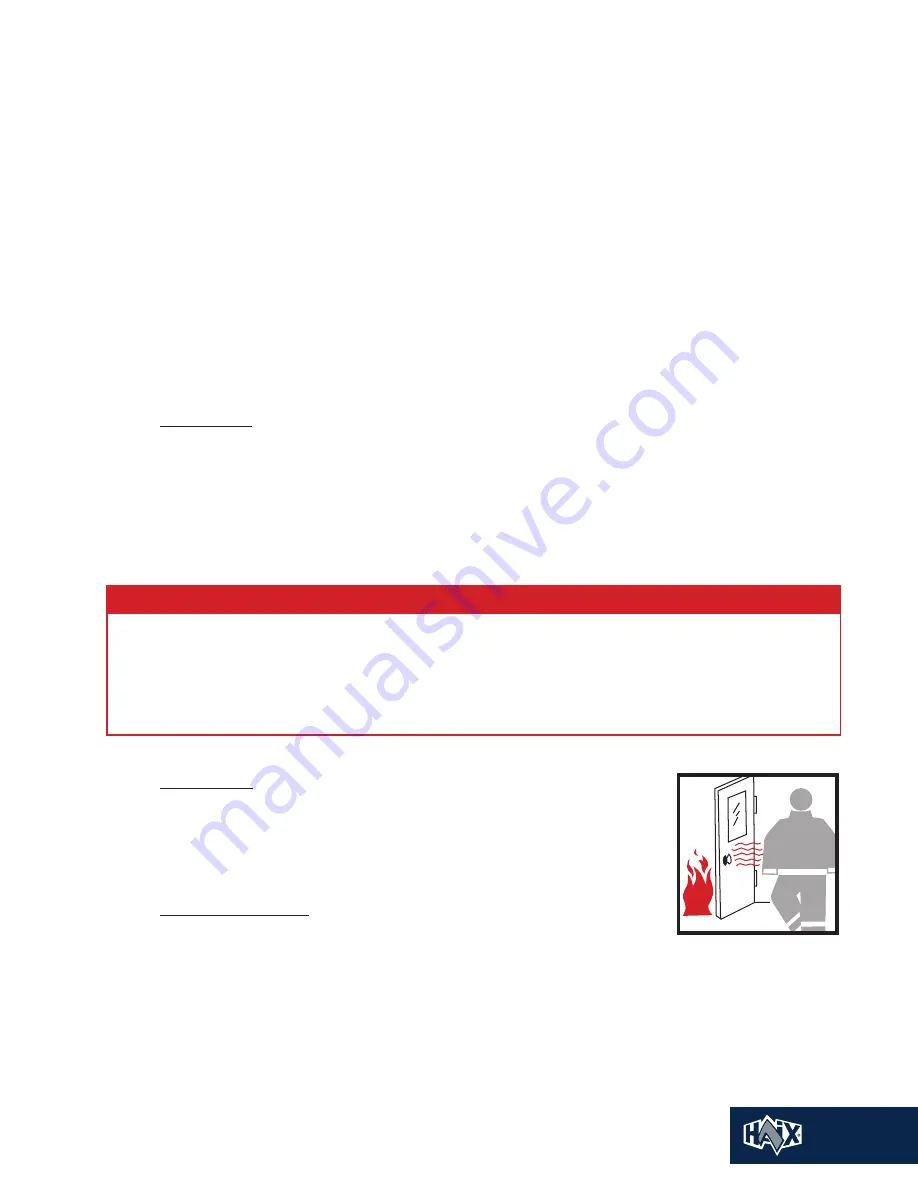
21
FIRE CHARACTERISTICS
10.2 FIRES ARE INHERENTLY DANGEROUS, UNPREDICTABLE ENVIRONMENTS
Temperatures can range upwards of more than 2000° F in a matter of seconds. It is
important to understand these conditions in order to maximize your protection and to
understand the limited ability of your Footwear to protect you from all hazards that may
be present in a fire.
10.3 BURN HAZARDS: TYPES OF HEAT TRANSFER
There are three types of heat transfer: conduction, convention, and radiation. Conduction is
the direct transfer of heat through contact with a hot object. Convection is the transfer of heat
through a medium; for example, air. Thermal radiation is the transfer of heat in the form of
light energy, directly from flames or reflected from hot surfaces. Fire fighters experience all
three types of heat in a fire, and must understand their effects on NFPA Compliant Footwear.
Conduction: The danger of being burned by conductive heat while wearing NFPA Compliant
Footwear is frequently underestimated. You can be burned by conductive heat when
you contact heated surfaces or objects. This very real hazard is significantly increased if
your Footwear is wet, either from damage to the moisture barrier, or from outside water
entering from the top opening. Water can provide a conductive bond between surfaces
that might not otherwise touch, increasing the chances of heat conduction. Water is a very
poor insulator; it conducts heat with dangerous and totally unpredictable efficiency!
Convection: Convected heat travels through the air, even if
there is no immediate appearance of fire. Convected heat can
elevate the temperature of your Footwear to a point at which
conductive heat burns can easily occur, particularly if your
Footwear is wet or damp.
Thermal Radiation: Thermal Radiation is the transfer of heat
in the form of light energy into a material, directly from flames
or reflected from hot objects. Factors that affect the speed
of radiant heat transfer include the temperature difference
between two surfaces, their distance from each other, and
the reflectivity of each surface.
Moisture in protective footwear can reduce insulation and lead to scalding burns! Always make sure your
footwear is dry before wearing it in any emergency situation. Dry your footwear and the inner sole between
runs to reduce the risk of serious burn injuries. Inspect your footwear for holes, and always secure the closures
to prevent the penetration of moisture from the fire environment. Follow Inspection, Maintenance, Storage,
Repair, Retirement, and Disposal Instructions in this Guide to make sure that the Footwear is not worn out or
in an unsafe condition.
DANGER
!
FIG. 5
Radiant heat from hot
surfaces and flames can
cause burns
















































